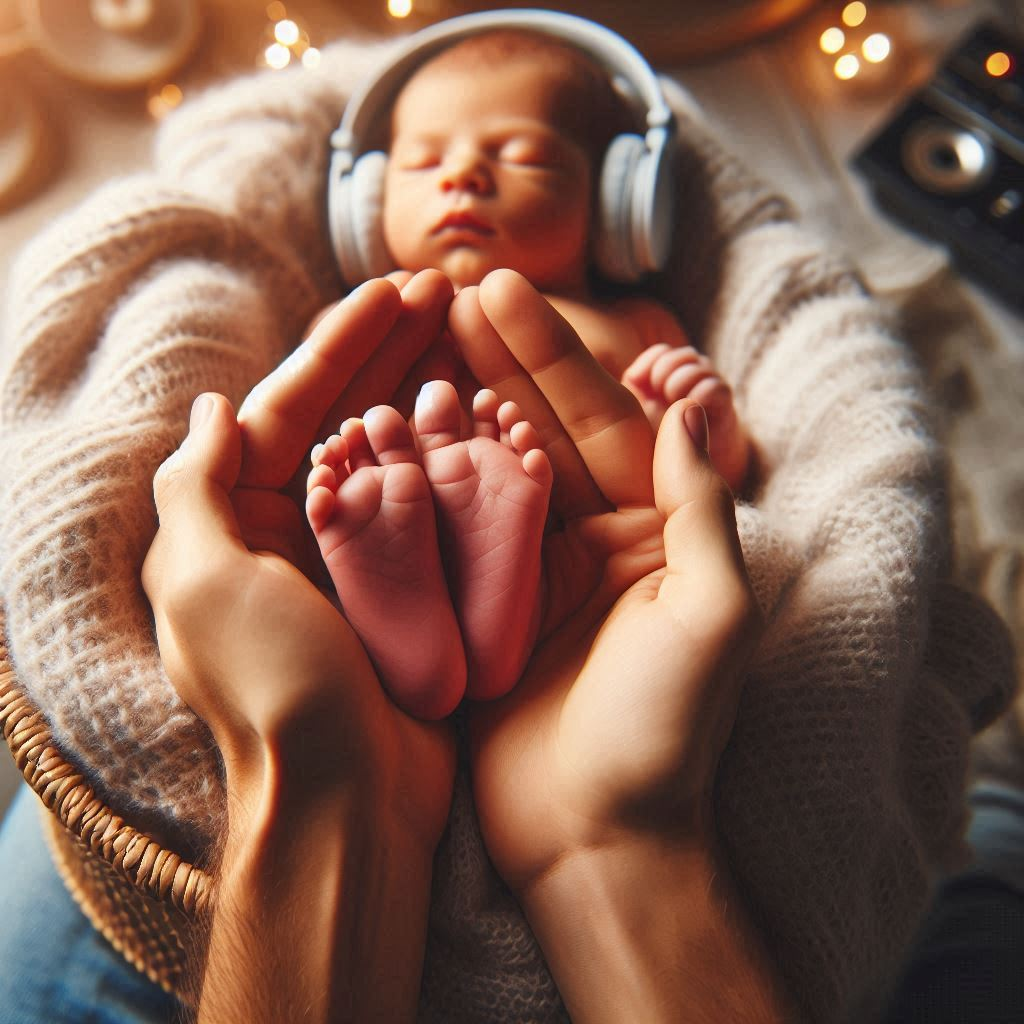What Toxins Are Released After Massaging the Baby
As a new parent, I was always looking for ways to soothe my fussy little one. When a friend suggested baby massage, I was intrigued but also a bit worried. I’d heard talk about “toxins” being released during massages, and that made me nervous. Was I going to hurt my baby? After doing some research and talking to our pediatrician, I learned the truth about baby massage and its effects. Let me share what I discovered on this journey.
Quick Answer
Contrary to popular belief, massages don’t directly release toxins from a baby’s body. Instead, they improve circulation and stimulate the lymphatic system, which can aid the body’s natural detoxification processes. The real benefits come from the release of feel-good hormones, reduced stress, and improved bonding between parent and child.
Understanding the “Toxin” Myth
First things first, let’s bust this myth wide open. The idea that massages directly push out toxins from our bodies is more fiction than fact. Our bodies are pretty amazing at cleaning themselves up, thanks to organs like our liver and kidneys. What massages do is give these natural processes a little boost.
When we massage our babies, we’re not squeezing out bad stuff. Instead, we’re helping their little bodies work better. It’s like giving their internal systems a gentle wake-up call, saying, “Hey, time to get moving!”
What Really Happens During a Baby Massage
So, if we’re not kicking out toxins, what’s going on when we massage our babies? Quite a lot, actually! Let’s break it down:
1. Improved Blood Flow
When we gently rub our baby’s skin, we’re helping their blood move around better. This improved circulation means oxygen and nutrients get where they need to go more easily. It’s like clearing traffic jams in their tiny bodies!
2. Lymphatic System Boost
Our lymphatic system is like our body’s cleanup crew. Massage can give this system a nudge, helping it move fluids around and supporting our immune system. For babies, this could mean better protection against those pesky colds and sniffles.
3. Hormone Release
Here’s where the real magic happens. Massage triggers the release of several important hormones:
- Oxytocin: Often called the “love hormone,” oxytocin helps with bonding and can make both baby and parent feel all warm and fuzzy inside.
- Serotonin: This is our body’s natural mood lifter. More serotonin can mean a happier, more content baby.
- Endorphins: These are nature’s pain relievers and can help soothe any discomfort your baby might be feeling.
4. Cortisol Reduction
Cortisol is often called the “stress hormone.” Too much of it can make anyone feel on edge, babies included. Massage can help lower cortisol levels, leading to a more relaxed, less fussy little one.
The Real Benefits of Baby Massage
Now that we know what’s really going on during a baby massage, let’s talk about the good stuff it can do:
- Better Sleep: A relaxed baby is more likely to sleep well. Many parents find that a pre-bedtime massage helps their little ones drift off more easily.
- Improved Digestion: Gentle tummy massages can help with gas and constipation, common issues for many babies.
- Stronger Bones: Some studies suggest that regular massage might help improve bone density in babies.
- Enhanced Immunity: By stimulating the lymphatic system, massage might give your baby’s immune system a helpful boost.
- Better Body Awareness: Massage can help babies become more aware of their bodies, potentially aiding in their motor skill development.
How to Massage Your Baby: A Step-by-Step Guide
Ready to give baby massage a try? Here’s a simple guide to get you started:
- Set the Scene: Choose a warm, quiet place. Make sure you’re relaxed too – your baby can pick up on your mood!
- Warm Your Hands: Cold hands on a warm baby tummy? No thanks! Rub your hands together to warm them up first.
- Use a Safe Oil: A little bit of baby-safe oil can make the massage smoother. Coconut or grapeseed oil are good choices.
- Start with the Legs: Gently stroke from hip to ankle. It’s like you’re softly squeezing out a toothpaste tube.
- Move to the Arms: Use the same technique, going from shoulder to wrist.
- Chest and Tummy: Use gentle circular motions on the chest. For the tummy, go clockwise to follow the direction of the intestines.
- Don’t Forget the Back: If your baby enjoys tummy time, give their back some love with gentle strokes from neck to bottom.
Remember, every baby is different. Some might love a 15-minute massage session, while others might only tolerate a few minutes. Follow your baby’s cues and stop if they seem uncomfortable.
When Not to Massage
While massage is generally safe, there are times when it’s best to skip it:
- If your baby has a fever or isn’t feeling well
- Right after a feeding (wait at least 45 minutes to avoid spit-up)
- If your baby has any skin conditions or rashes
- When your baby is overly tired or cranky
The Power of Touch: Beyond Just Massage
While we’re on the topic of baby massage, it’s worth mentioning how important touch is for babies in general. Skin-to-skin contact, cuddling, and even just holding your baby close have incredible benefits:
- Temperature Regulation: Babies held close to their parents regulate their body temperature more easily.
- Heart Rate Stabilization: A parent’s touch can help stabilize a baby’s heart rate.
- Pain Relief: Studies have shown that skin-to-skin contact can reduce pain in babies during medical procedures.
- Emotional Development: Regular, loving touch helps babies feel secure and can support healthy emotional development.
Addressing Common Concerns
As I learned more about baby massage, I came across some common worries that other parents had. Let’s address a few:
1. “Will massage make my baby dependent on touch to sleep?”
Not at all! Touch is natural and necessary for babies. Massage can be a part of a healthy bedtime routine without creating dependency.
2. “I’m worried about pressing too hard. How do I know if I’m doing it right?”
Start with very gentle pressure – think of how you’d touch a bubble without popping it. Your baby will let you know if they’re uncomfortable. Trust your instincts!
3. “My baby cries when I try to massage them. Should I keep trying?”
If your baby consistently dislikes massage, it’s okay to take a break and try again later. Some babies need time to get used to new sensations.
The Science Behind Baby Massage
For those who love numbers and facts, here are some interesting findings from research on baby massage:
- A study published in the journal Early Human Development found that premature babies who received regular massages gained 47% more weight than those who didn’t.
- Research in the Journal of Pediatric Psychology showed that infants who received massage slept better and showed lower levels of stress hormones.
- A study in Infant Behavior and Development found that babies who received regular massage showed better performance on developmental tests at 12 months old.
Cultural Perspectives on Baby Massage
Baby massage isn’t a new trend – it’s been practiced in many cultures for centuries. Here’s a quick look at how different parts of the world approach baby massage:
- India: In India, baby massage is a daily ritual called “abhyanga.” It’s believed to promote strength, growth, and overall health.
- Nigeria: The Yoruba people of Nigeria practice a form of baby massage and stretching called “onika” to help babies grow strong and flexible.
- Russia: Russian baby massage techniques are often more vigorous and are believed to boost circulation and immunity.
- Sweden: Swedish baby massage focuses on gentle, rhythmic strokes and is often incorporated into early childcare practices.
Conclusion: Embracing the Benefits of Baby Massage
As I discovered through my journey into the world of baby massage, there’s no need to worry about mysterious toxins being released. Instead, we can focus on the real, scientifically-backed benefits: improved circulation, better sleep, reduced stress, and a stronger bond between parent and child.
Massaging your baby is a beautiful way to connect, soothe, and support their development. It’s not about pushing out bad stuff, but about encouraging all the good things – like relaxation, comfort, and love.
Remember, every baby is unique. What works for one might not work for another. The key is to approach baby massage with patience, love, and attention to your little one’s cues. With time, you might find that it becomes a cherished part of your daily routine, bringing joy to both you and your baby.
So why not give it a try? Start with just a few minutes a day and see how your baby responds. You might be surprised at the positive changes you see – not just in your baby, but in yourself too. After all, the simple act of massaging your baby can be just as relaxing and beneficial for you as it is for them.
Here’s to happy, healthy babies and the parents who love them!

Jessica Winter is a passionate parenting blogger with two years of experience guiding new and seasoned parents through the joys and challenges of raising babies. Her insightful posts blend personal anecdotes with expert advice to offer a warm and practical perspective on modern parenting.

